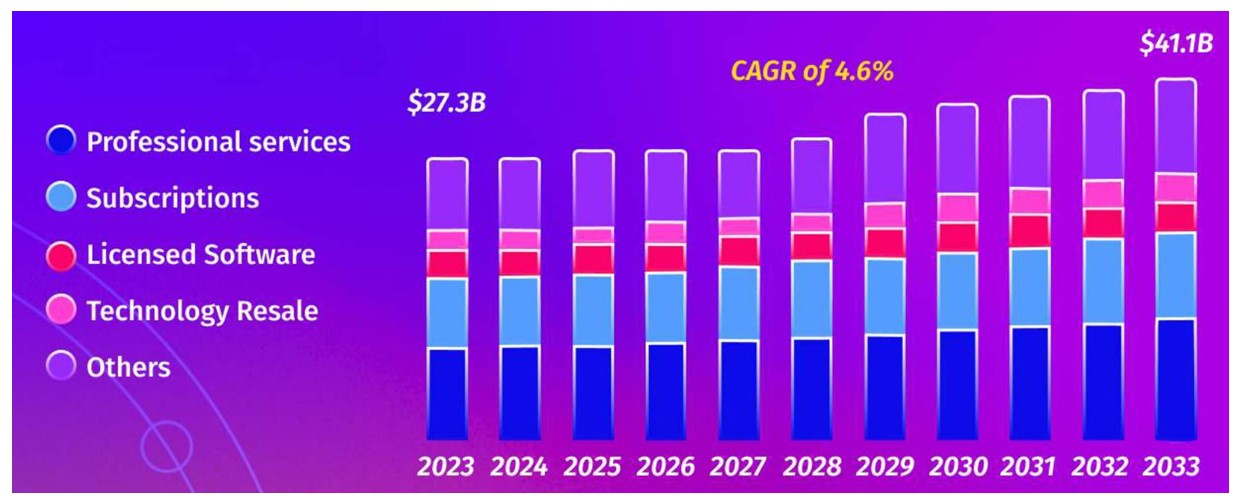The global computer-aided coding market is expected to grow strongly at a CAGR of 11% between 2024 and 2036. It is expected to reach a revenue of USD 22 billion by the end of 2036, up from USD 5 billion in 2023.
The need for coding accuracy and automation in the healthcare sector with the advancement of electronic health records (EHR) is expected to drive the demand for computer-aided coding software. In the United States, approximately 9 out of 10 doctors’ offices already use an electronic medical record.
These are real-time, patient-centric records that instantly and securely make information available to authorized users.

In any case, the global market for electronic medical records is evaluated
to $27 billion in 2023. It is expected to reach $41 billion by 2033, according to a study by Jasper Colin (image above).
Remote patient monitoring
The North America market is expected to record a significant market share of 36% during the forecast period. Increasing adoption of digital healthcare services in the region is increasing the market size.
Remote patient monitoring (RPM) is a key component of digital healthcare that enables healthcare providers to monitor patients’ vital signs, symptoms and medication adherence remotely, outside of physical environments.
The global remote patient monitoring market is expected to reach $117.1 billion this year, with a CAGR of 13.4% between 2019 and 2024, according to Frost & Sullivan.
Companies like BioTelemetry and Medtronic are leading providers of RPM solutions that use wearables, mobile apps and cloud-based platforms to collect and analyze real-time patient data, enabling proactive interventions and personalized care.

The computer-aided coding market in the Asia Pacific region is expected to reach a value of 28% in the coming years due to the increasing demand for the smaller work of healthcare systems, especially in data management.
The development of “smart” hospitals that use electronic medical records to record and store patient medical data is driving market trends.
We can cite the case of China Medical University Hospital (CMUH) — one of the best smart hospitals in the world in 2024 according to Newsweek magazine — which partnered with Google Cloud in 2023. Located in Taiwan, it uses Google Cloud’s Generative AI technology and MedLM from Google Cloud.
The web market segment is expected to record a market share of 46% during the forecast period. SaaS obviously reduces the need for complicated installations or updates on devices in healthcare companies.
50 petabytes of data
In fact, more than 2 billion people worldwide with a mobile phone use m-health for diagnosis. More than 56% of doctors communicated with patients via mHealth.
The hospital segment of the market is expected to reach a market share of 43% during the forecast period, owing to the increasing challenges faced by hospitals in coding and documentation.
The presence of a huge data in hospitals due to numerous medical procedures performed in various specialties that require complex encryption is considered a growth factor for the market segment.
Healthcare sectors generate roughly 30% of the world’s data, and by 2023, hospitals are estimated to produce 50 petabytes of data each year, equivalent to the entire Library of Congress data set of 137 terabytes per day.
In conclusion, the digital healthcare market is expected to grow exponentially in the coming years, driven by technological advancements, increasing demand for remote healthcare services, and a changing regulatory and policy environment.

